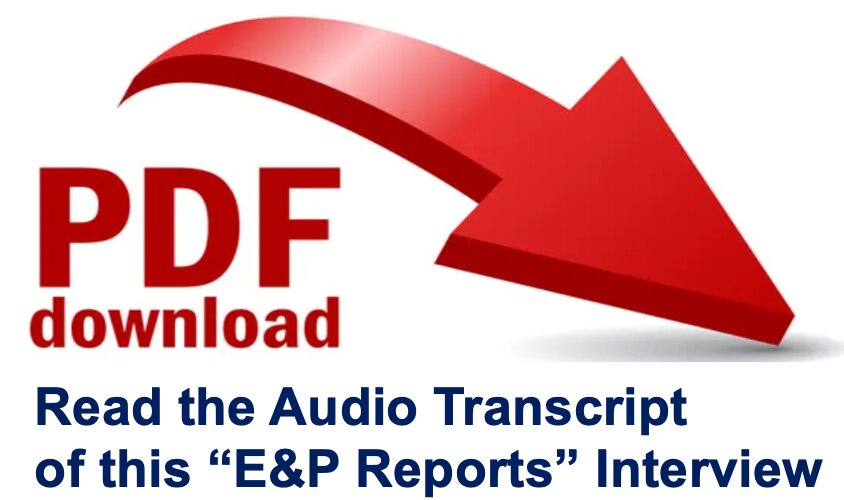In this episode, E&P spoke with two prominent figures in the newspaper industry: Matt Paxton, publisher of The News-Gazette in Lexington, Virginia, and past president of the National Newspaper Association (NNA), and Brad Hill, CEO of Interlink and an NNA representative on the USPS Mailer’s Technical Advisory Committee. They explore the ongoing relevance of print media, the intricacies of postal delivery and the NNA’s advocacy efforts.
The shift to postal delivery

Despite the digital shift, print media remains a cornerstone for many community newspapers. Matt Paxton stated, “For our membership, which is almost exclusively community papers in more rural areas, the average NNA member has a circulation of 3,000. We can’t survive in a digital-only world in our types of communities. Our readers like getting the print product. They value it, and they’ll pay for it.”
The conversation also delved into the shift from carrier delivery to postal delivery, a move driven by both logistics and cost considerations. Brad Hill explained, “It’s very difficult to keep a carrier to deliver papers once a week. From a cost perspective, there’s a lot of money to be saved by using the mail, at least locally.”
Paxton added that the NNA has long been involved with the postal service, using in-county rates to manage costs. “We do take advantage of what’s known as the in-county rates, which are lower than rates for newspapers being mailed outside of the county. That has really been NNA’s core concern in terms of postal — maintaining that in-county subclass of mail at a fair and reasonable rate.”
USPS rule changes: A need for costly equipment
Brad Hill explained that the Postal Service’s push for a shift from rubber bands and strings to plastic straps for bundling newspapers has caused a major issue for community newspapers. Hill mentioned, “The Postal Service contends that when that kind of bundle goes across its equipment or through its network, handling is likely to break apart that bundle and cause issues.” Matt Paxton highlighted the impracticality for smaller publishers, noting, “I priced some of this equipment, and it’s in the $8000 to $10,000 range. It”s inefficient to buy something that costs that much to use once a week.”
The USPS “one-size-fits-all” approach doesn’t work
Brad Hill emphasized the unnecessary nature of a blanket rule, particularly for local publications, stating, “There’s no reason for a rule like this to be imposed on small publications that are being delivered locally.” Paxton supported this view, sharing, “Most of our newspapers get delivered to our post office a block away, and it goes right out on the routes. It never goes through any postal transportation or sorting equipment.”
NNA sends a letter to the USPS
As E&P reported on July 8th, The National Newspaper Association filed comments to the United States Postal Service on behalf of NNA and its member newspapers regarding the new rules concerning securing bundles of flats. Paxton was cautiously optimistic when asked about the likelihood of the USPS responding to those concerns: “Our comments are an official document with the Postal Service. We have had meetings with the Postal Service, and we’re somewhat optimistic that they might modify the rule to allow us to continue to use tied bundles for local distribution.” Hill reinforced this sentiment, suggesting that “a properly tied string bundle is just as secure, in some cases more secure than a strapped bundle for a fraction of the cost.”
Advocacy and legislative efforts
The NNA’s advocacy efforts were also discussed, particularly regarding the USPS Delivering for America 10-year plan. That plan outlines the USPS’s core strategies to address its reported declines in delivery efficiency and continued rate increases. It is also accompanied by the Delivering for Democracy Act, bipartisan legislation currently in Congress that would help news outlets overcome the current crisis of local journalism by incentivizing reliable postal service and limiting excessive rate increases.
Paxton explained, “We need a strong Postal Service. It needs to be sustained. Our problem is how they’re going about it, which is basically putting everything on the back of the ratepayers with no concern about it at all, I think, of trying to rein in costs. Of course, their biggest cost is people.” He continued, “The Delivery for Democracy Act, sponsored by Senator Peter Welch of Vermont and others, is, at its heart, requiring that the Postal Service reach their goal of delivering the mail on time 90% of the time, or they are not going to be entitled to these large rate increases.”
Paxton explained the importance of the NAA’s role in helping legislation like this get passed through local advocacy. “When you walk into a legislator’s office, the staff, who are really advising the legislator, find our grassroots approach beneficial,” stated Paxton. “We still write local editorials, and politicians recognize our influence.” Hill reinforced the impact of NNA’s advocacy, particularly in maintaining six-day mail delivery. “Without the NNA’s involvement, we might not have Saturday delivery today. Most discounts unique to newspapers in the periodical class of mail exist today because of NNA’s long-term efforts.”
 |
 |
Comments
No comments on this item Please log in to comment by clicking here